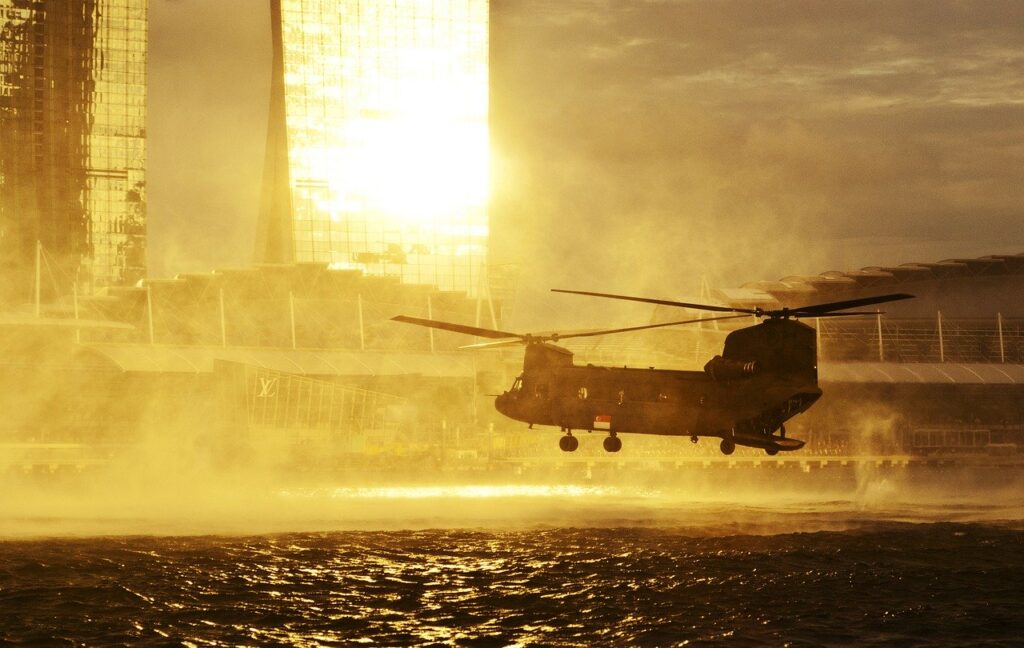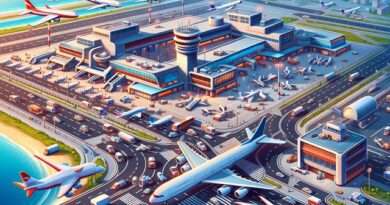What is Prop Wash?
Prop wash is the airflow generated by an aircraft’s propeller, which can have significant effects on the performance of the aircraft, particularly during takeoff and landing. This airflow can create disturbances on the ground, which can affect other aircraft, people, and equipment in the vicinity.
Prop wash has several effects on an aircraft. It can cause a loss of lift and control of the aircraft when taking off or landing. Additionally, it can cause debris and foreign objects to be sucked into the engine, which can damage the engine and potentially cause a catastrophic failure.
According to the Federal Aviation Administration (FAA), pilots must be aware of the effects of it and take appropriate measures to mitigate them. For example, pilots should avoid hovering over people or objects on the ground and should maintain a safe distance from other aircraft to avoid prop wash disturbances.

Prop wash can also have an impact on airport design and operations. According to a report by the National Aeronautics and Space Administration (NASA), airport planners should consider the effects of it when designing taxiways, runways, and other airport facilities. Additionally, the report recommends that airports implement measures to mitigate the effects of PW, such as using blast fences or other barriers to redirect the airflow.
Why is Prop Wash Dangerous?
Prop wash can lead to several hazards, both for aircraft and ground personnel. The turbulent air can:
- Affect nearby planes: Smaller aircraft parked near propeller-driven planes can be pushed or destabilized by the powerful airflow. This can lead to accidents, especially in congested ramp areas.
- Damage equipment: PW can send debris flying, causing damage to nearby structures or ground vehicles. This is particularly concerning when operating in small airports with tight spaces.
- Create flight control issues: During takeoff or landing, strong PW can affect control surfaces, making it harder for a pilot to steer the plane.
Managing Prop Wash
To minimize the risks of prop wash, aviation professionals follow strict protocols:
- Maintain safe distances: Ground crews ensure that planes are spaced far enough apart to avoid prop wash interference.
- Use barriers: In some cases, physical barriers can help deflect the powerful airflow, protecting nearby equipment and personnel.
- Monitor conditions: Pilots and crews stay alert to environmental conditions like wind direction, which can amplify the effects of prop wash.
Real-World Incidents
Several aviation reports have documented the dangers of ignoring prop wash. NASA’s studies show how turbulence from propeller-driven aircraft can lead to accidents or equipment damage if planes are parked too close to each other (NASA Technical Reports Server) (Aviation Safety Reporting System). In some cases, lighter planes have even been blown off course by the force of a nearby propeller.
In conclusion, it is an important consideration in aviation, and pilots, airport planners, and other aviation professionals must take appropriate measures to manage its effects.
References:
- “Propeller Aerodynamics and Noise.” Federal Aviation Administration, FAA-H-8083-21A, 2012. https://www.faa.gov/regulations_policies/handbooks_manuals/aviation/phak/media/09_phak_ch8.pdf
- “Airport Design and Propwash.” National Aeronautics and Space Administration, NASA/TM-2013-217361, 2013. https://ntrs.nasa.gov/archive/nasa/casi.ntrs.nasa.gov/20130013213.pdf


